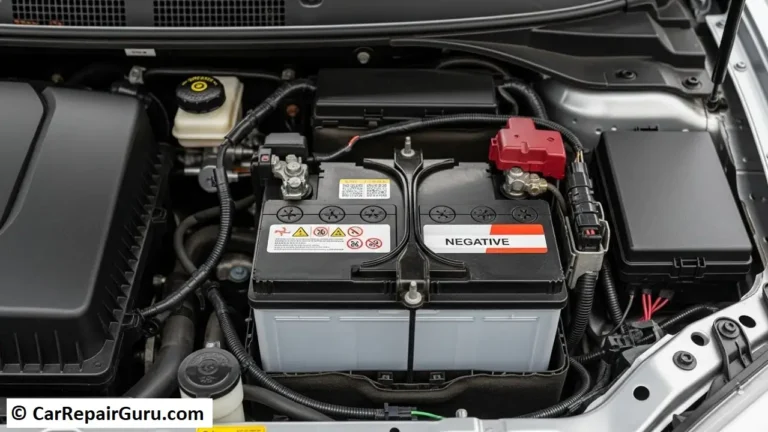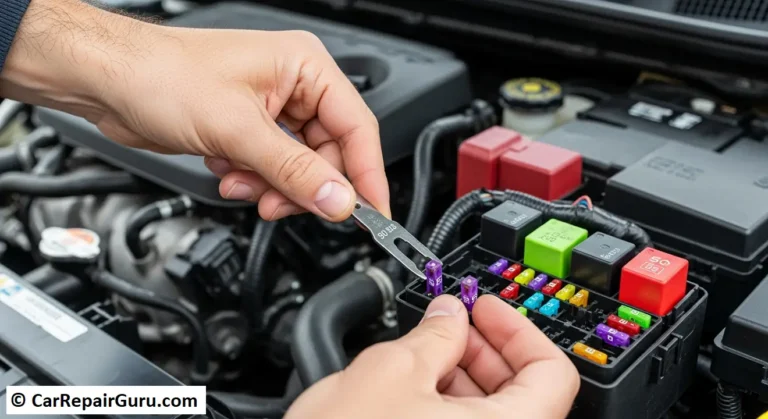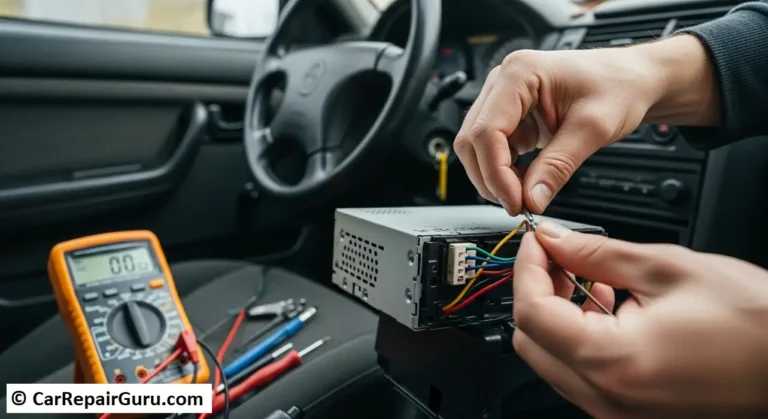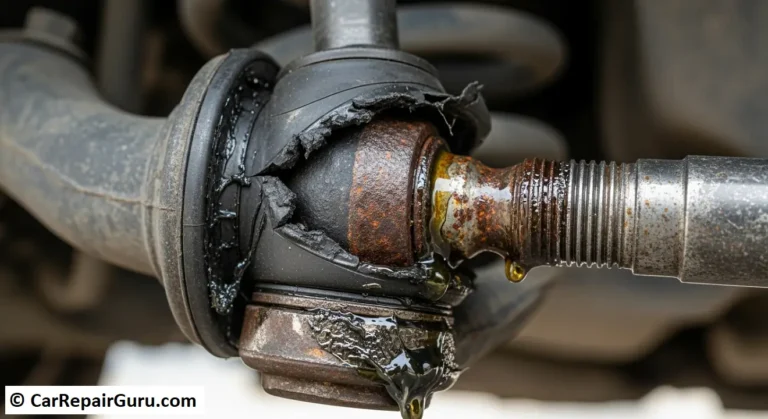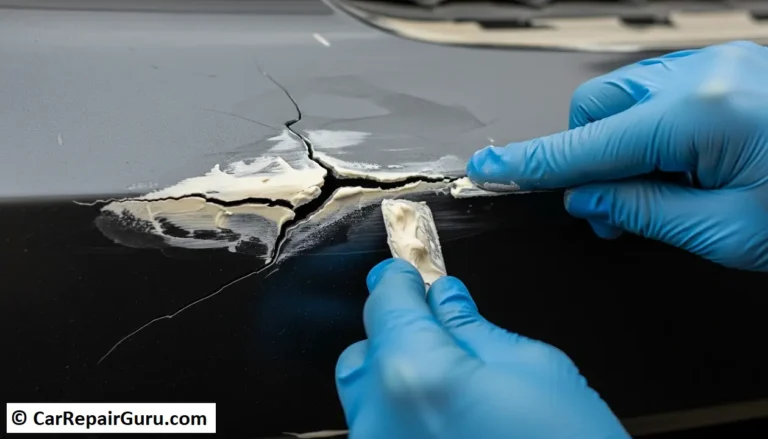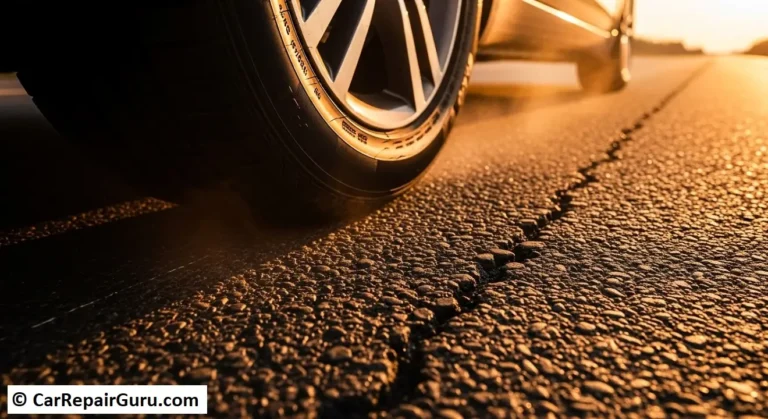
We’ve all been there. You’re on the highway, and someone starts drifting into your lane. You press the center of your steering wheel, expecting a loud, attention-grabbing blast, but all you get is a disappointing silence. Or maybe just a sad, weak little squeak. A car horn not working is not just frustrating; it’s a genuine safety issue that can prevent you from alerting other drivers to your presence and avoiding an accident.
A broken car horn can also be an automatic failure on a vehicle safety inspection in many states. But here’s the good news: the reason your horn stopped working is often a simple, inexpensive fix that you can likely handle yourself in your own driveway.
This guide will walk you through everything you need to know. We’ll cover the most common culprits, provide a step-by-step troubleshooting process to help you diagnose the problem, and break down what you can expect for car horn repair costs.
Why Isn’t My Car Horn Working? The Most Common Culprits
Before we dive into the repairs, let’s look at the usual suspects. Nine times out of ten, your silent horn is caused by one of these issues, often starting with the easiest to fix.
- A Blown Fuse: This is the #1 most common reason for a horn failure. The fuse is a tiny, cheap part designed to protect the horn’s electrical circuit from power surges. If it blows, the circuit is broken, and the horn gets no power.
- A Faulty Horn Relay: Think of the relay as a heavy-duty switch. Your steering wheel button sends a tiny signal to the car horn relay, which then closes a more powerful circuit to send the big jolt of electricity the horn needs. When the relay fails, that powerful circuit never closes.
- A Bad Horn Assembly: The horn itself is a simple device, but like any part, it can fail over time due to moisture, corrosion, or internal failure.
- A Broken Clock Spring: Located inside your steering column, the clock spring is a special coiled wire that allows your steering wheel to turn while maintaining an electrical connection for the horn, airbag, and cruise control buttons. When it breaks, the horn button can no longer send its signal.
- Damaged Wiring or Connections: Wires can get frayed, cut, or corroded, and connectors can come loose. This is especially common for the horn itself, which is often located at the front of the car where it’s exposed to the elements.
- A Faulty Horn Button: The physical switch in your steering wheel can wear out, though this is less common than the other issues.
How to Fix a Car Horn – A 5-Step Diagnostic Guide
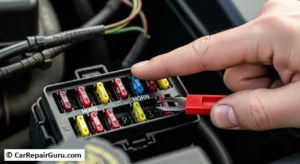
Ready to get your hands dirty? This diagnostic guide is arranged from the easiest and most common fix to the most complex. All you’ll need are a few basic tools and your car’s owner’s manual.
Important Safety Warning: Your car’s electrical system can be powerful. For any steps that involve more than just looking in your fuse box, it’s highly recommended to disconnect the negative terminal of your car battery to prevent accidental shorts or shocks.
Step 1 – Check the Horn Fuse (The Easiest Fix)
If your horn not working is due to the fuse, you’re in luck. This is a five-minute, five-dollar fix.
- Locate Your Fuse Box: Your car likely has two fuse boxes—one in the engine bay and one inside the cabin (often under the dashboard or in the glove box). Your owner’s manual is your best friend here; it will tell you exactly where they are.
- Find the Horn Fuse: Open the fuse box cover. On the inside of the cover or in your manual, you’ll see a diagram that maps out what each fuse and relay does. Look for the one labeled “HORN.”
- Inspect the Fuse: Pull the horn fuse out. You can use a fuse puller (often included in the fuse box) or a pair of needle-nose pliers. Hold the fuse up to the light. Inside the plastic casing, you should see a small metal strip. If that strip is broken or looks burnt, you have a blown fuse.
- Replace It: If the fuse is blown, replace it with a new fuse of the exact same amperage rating. The rating is printed on top of the fuse (e.g., 10, 15, 20). Using a higher-rated fuse is a fire hazard.
Step 2 – Test the Horn Relay
If the fuse is fine, the next stop is the car horn relay. This part can fail without any visual signs, but there’s a clever trick to test it.
- Locate the Horn Relay: Just like the fuse, the relay’s location will be on the fuse box diagram. It’s a small, plastic, cube-shaped component.
- Listen for a Click: Have a friend press the horn button while you listen closely to the relay. If you hear a faint “click” from the relay, it means the relay is receiving power from the steering wheel button. This tells you the problem is likely after the relay (wiring or the horn itself). If you hear no click, the relay could be bad, or the problem is before it (the clock spring or horn button).
- Perform the “Swap Test”: This is the easiest way to confirm a faulty relay. Find another relay in the fuse box that has the exact same part number printed on it and controls a non-essential system (like the fog lights or rear defroster). Swap the two relays. Now, try the horn. If it works, you’ve found your problem! You just need to buy a new relay. If the horn still doesn’t work, the relay is likely fine.
Step 3 – Test the Horn Itself
If the fuse and relay are good, it’s time to see if the horn assembly is the culprit.
- Locate the Horn: The horn (or horns, as many cars have two) is almost always located at the front of the car, typically behind the grille or in front of the radiator. It looks like a small snail or a round speaker.
- Inspect the Connections: Check that the electrical connectors are firmly plugged in and that the wires aren’t corroded or broken. Sometimes, simply cleaning the terminals with a wire brush can fix a weak car horn.
- Directly Test the Horn: (Use caution with this step.) Disconnect the wires from the horn. Run a “jumper” wire from your car battery’s positive (+) terminal directly to the horn’s positive terminal. If the horn blares, you know the horn itself is good. The problem lies in the wiring or the switch. If it remains silent, the horn assembly is dead and needs to be replaced.
Step 4 – Inspect the Wiring and Connections
A visual inspection can sometimes reveal the problem. Look at the wires leading to the horn assembly. Check for any obvious signs of damage, such as breaks, frayed insulation, or heavy corrosion (which often looks like green or white crust). A broken wire will prevent power from ever reaching the horn.
Step 5 – Check the More Complex Components (Clock Spring & Horn Button)
If you’ve checked the fuse, relay, and the horn itself, the problem is likely located in the steering column.
- The Clock Spring: The most telling sign of a broken clock spring is when your car horn not working is accompanied by an airbag warning light on your dash or other steering wheel-mounted controls (like cruise control or radio buttons) also failing.
- The Horn Button: While possible, the switch itself is one of the less common points of failure.
Recommendation: Replacing a clock spring involves removing the steering wheel and the airbag module. Due to the extreme safety risk associated with improperly handling an airbag, this job is best left to a professional mechanic.
Car Horn Repair Cost – DIY vs. Professional
The cost to fix your horn can vary dramatically depending on the cause.
DIY Repair Costs
- Horn Fuse: $1 – $5 for a pack of assorted fuses.
- Horn Relay: $10 – $30 for a new relay.
- Horn Assembly: $30 – $75 for a new aftermarket horn.
Professional Repair Costs (Includes Labor)
- Simple Diagnosis: $50 – $100 for a mechanic to trace the electrical issue.
- Fuse/Relay Replacement: $75 – $150 (mostly labor and diagnostic time).
- Horn Assembly Replacement: $100 – $250.
- Clock Spring Replacement: $300 – $700+. This is the most expensive repair due to the price of the part and the complex, safety-critical labor involved.
Know Your Limits – When to See a Professional
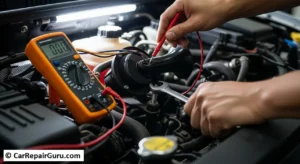
While many horn issues are DIY-friendly, you should stop and call a certified mechanic if:
- Your airbag warning light is on. Never attempt to work on the steering column when this light is active.
- You are uncomfortable working with your car’s electrical system.
- You have checked the fuse, swapped the relay, and tested the horn, but it still doesn’t work.
- You suspect the problem is the clock spring.
Get Your Voice Back on the Road
A silent horn can leave you feeling powerless on the road. By following these steps, you can systematically troubleshoot the problem and, in many cases, perform the fix yourself with minimal cost and effort. Always start with the simplest solutions—the horn not working fuse and the relay—before moving on to more complex parts.
Most importantly, always prioritize your safety. If you ever feel out of your depth, don’t hesitate to consult a professional mechanic. Getting your horn working again isn’t just about convenience; it’s about ensuring you and those around you stay safe on the road.
Have you ever fixed your own car horn? Leave a comment below with your experience or any questions you might have!
Common Questions About a Broken Car Horn
Why does my car horn work intermittently?
A horn that works intermittently is almost always a sign of a loose electrical connection or a failing relay. The connection might be making contact sometimes and not others. A relay on its way out can also work sporadically before failing completely. Check the wiring at the horn itself first for any looseness.
Why does my car horn sound weak or funny?
A weak car horn is often caused by low voltage due to a poor ground connection or corrosion on the terminals. Many cars have a high-tone and a low-tone horn; if one fails, the remaining horn will sound odd and less powerful. Cleaning all connections or replacing the failed unit will solve this.
Can a dead battery cause the horn to not work?
Absolutely. The horn requires a significant amount of amperage to work. A very weak or dead battery won’t have enough power to make it sound, or it may only produce a faint click from the relay.
Is it illegal to drive without a working car horn?
In virtually every state and country, yes. A functional horn is required by law as essential safety equipment. Driving without one can get you a ticket and will cause your vehicle to fail its safety inspection.
